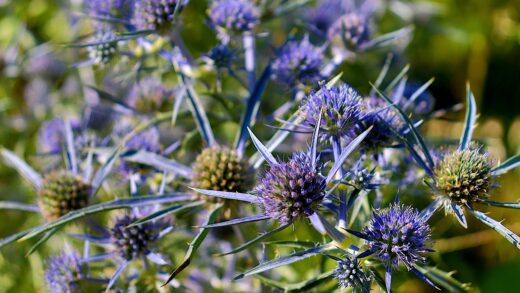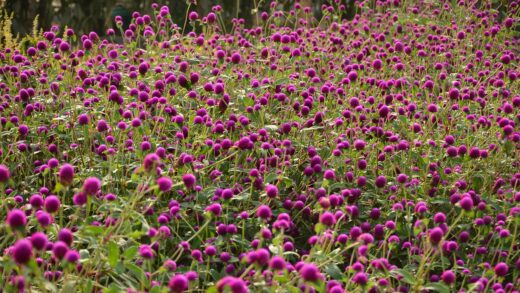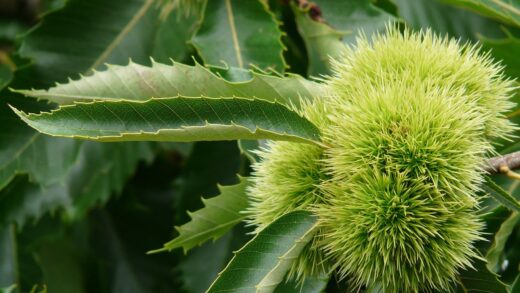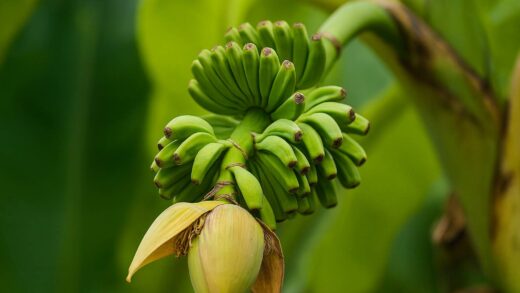Understanding the specific water requirements of African violets is fundamental to their cultivation, as improper irrigation is the single most common reason these plants fail to thrive. The core principle is to maintain consistent moisture in the root zone without creating waterlogged conditions. These plants have fine, hair-like roots that are extremely efficient at absorbing water but are also highly susceptible to rot when deprived of oxygen in saturated soil. Therefore, the goal is not just to provide water, but to do so in a way that supports a healthy, airy root environment. The frequency and amount of water needed are not static; they fluctuate based on the plant’s environment, including temperature, humidity, light, and the type of pot and soil mix used.
A crucial first step is to learn how to assess the soil’s moisture level accurately. Relying on a fixed schedule, such as watering every Saturday, is a recipe for disaster. Instead, a tactile approach is far more reliable. Insert your finger into the soil up to the first knuckle; if the soil feels dry at this depth, it is time to water. If it still feels cool and moist, you should wait another day or two and check again. Over time, you can also learn to judge the plant’s needs by the weight of the pot—a well-watered pot will feel significantly heavier than one that is dry.
The quality of the water you use is another important consideration that can affect the long-term health of your plant. Tap water in many areas is treated with chlorine and may be “hard,” meaning it contains a high concentration of dissolved minerals like calcium and magnesium. While African violets can tolerate this for a time, these chemicals and minerals can accumulate in the soil, altering the pH and eventually becoming toxic to the roots. To mitigate this, it is highly recommended to let tap water sit in an open container for at least 24 hours before use, which allows much of the chlorine to dissipate into the air.
For optimal results, using purified water is an excellent practice. Rainwater, distilled water, or water processed through a reverse osmosis system are all ideal choices as they are free from the chemicals and dissolved solids found in most tap water. Furthermore, always use room-temperature or lukewarm water. Cold water can shock the plant’s root system, which can inhibit its function, stunt growth, and even cause damage to the leaves if it splashes on them, resulting in discolored rings or spots. This leaf spotting is a direct result of the temperature differential and is a common cosmetic issue for novice growers.
Bottom watering technique
The bottom watering method is widely favored by experienced African violet growers because it is the most effective way to ensure the entire root ball becomes evenly saturated while keeping the foliage and crown dry. To bottom water, you simply place the plant’s pot into a larger container, saucer, or tray that is filled with about an inch (2-3 cm) of room-temperature water. The water is then absorbed up into the soil through the drainage holes via capillary action. This process mimics how plants might receive water in a more natural, gentle manner.
More articles on this topic
Allow the plant to sit in the water for approximately 20 to 30 minutes. The exact time will vary depending on how dry the soil was to begin with and the composition of the potting mix. You can tell the process is complete when the top surface of the soil appears dark and feels moist to the touch. It is crucial not to leave the plant sitting in the water for an extended period, as this can lead to the soil becoming overly saturated, defeating the purpose of providing a well-aerated root environment. Once the top is moist, remove the pot from the saucer immediately.
After removing the pot from the water, it is essential to allow it to drain completely. Place the pot on a draining rack or an empty saucer for another 15 to 20 minutes so that any excess water that was not absorbed by the soil can freely exit through the drainage holes. This final step is vital to prevent the pot from sitting in standing water, which is a direct path to root rot. Never return a pot to a decorative cachepot or a tight-fitting saucer until you are certain it has finished draining.
One of the significant advantages of bottom watering is that it helps to prevent the compaction of the light, airy potting mix that African violets require. When you water from the top, the force of the water can gradually compress the soil particles, reducing the air pockets that are essential for root health. Bottom watering avoids this issue entirely. It also helps to wash away excess fertilizer salts from the top layer of the soil, drawing them downwards and out of the pot as the water is absorbed from below, which can help maintain a healthier root environment.
Top watering considerations
While bottom watering is often recommended, top watering can also be done successfully if performed with care and precision. If you choose to water from the top, it is imperative to avoid getting any water on the leaves or in the center crown of the plant. The fuzzy texture of African violet leaves makes them prone to holding water droplets, which can lead to fungal spots or blemishes, especially if cold water is used. Water that pools in the crown can quickly cause crown rot, which is almost always fatal to the plant.
More articles on this topic
To top water safely, use a watering can with a long, thin spout. This allows you to direct the stream of water precisely onto the soil surface, underneath the canopy of leaves. Apply the water gently and slowly, moving around the entire perimeter of the pot to ensure the soil is moistened as evenly as possible. Continue adding water until you see it begin to flow freely from the drainage holes at thebottom of the pot. This indicates that the entire root ball has been saturated.
Just as with bottom watering, allowing the pot to drain thoroughly after a top watering is a critical step. Once water is running out of the bottom, stop watering and let the pot sit for 15-20 minutes to allow all excess moisture to escape. Afterwards, be sure to empty any water that has collected in the saucer or cachepot. Re-emphasizing this point is crucial: under no circumstances should an African violet be left to sit in a puddle of standing water.
A potential benefit of occasional top watering is that it can help to flush out the excess mineral and fertilizer salts that tend to accumulate in the upper layers of the potting mix. Over time, these salts can build up to toxic levels and damage the plant’s roots. Therefore, some growers adopt a hybrid approach, primarily using the bottom watering method but performing a thorough top watering every month or two specifically to cleanse the soil. This can provide the best of both worlds, combining the gentle saturation of bottom watering with the flushing action of top watering.
Self-watering systems
For enthusiasts who have a large collection of plants or who travel frequently, self-watering systems can be an excellent solution for maintaining consistent soil moisture. These systems are designed to provide a constant, slow supply of water to the plant’s roots, preventing the soil from ever drying out completely while also avoiding oversaturation. There are several types of self-watering pots available, but most operate on a similar principle, utilizing a water reservoir and a wicking system.
A common type of self-watering pot for African violets is the two-part container. This consists of an inner pot that holds the plant and soil, and an outer pot that serves as the water reservoir. A wick, typically made of synthetic material like nylon or acrylic yarn, is inserted through the bottom of the inner pot so that one end is in the soil and the other end dangles down into the reservoir. This wick draws water up into the soil as needed through capillary action, keeping the soil perfectly and consistently moist.
To use a wicking system effectively, the potting mix must be extremely light and porous. A mix containing at least 50% perlite or a similar aeration material is recommended. A standard, heavier soil mix would hold too much water in this system and would quickly become waterlogged, leading to root rot. The initial setup requires you to water the plant from the top one time to activate the capillary action of the wick, and from that point on, you only need to keep the outer reservoir filled with your water and dilute fertilizer solution.
While wicking systems offer great convenience, they do require periodic maintenance. The reservoir should be cleaned regularly to prevent the growth of algae or bacteria. It is also important to leach the soil every couple of months by watering from the top with plain water and allowing it to drain completely. This action flushes out any fertilizer salts that may have accumulated in the potting mix, which can be a more significant issue in a closed wicking system where water is constantly being drawn upwards.
Recognizing watering problems
Learning to recognize the signs of both overwatering and underwatering is a crucial skill for any African violet grower. Overwatering is the more common and more dangerous of the two issues. The initial signs of an overwatered plant can be misleading, as the leaves may appear limp and wilted, similar to a plant that is too dry. Other key symptoms include a mushy crown, yellowing lower leaves, a soil surface that is constantly wet or has developed green algae, and a generally unhealthy, lackluster appearance. If you suspect overwatering, you must act quickly by allowing the soil to dry out more than usual before the next watering.
In severe cases of overwatering, root rot will set in. This is a fungal disease that attacks and destroys the plant’s root system. To check for root rot, you must gently remove the plant from its pot. Healthy roots should be white or light-colored and firm. Rotted roots will be brown or black, mushy to the touch, and may have a foul odor. If root rot is present, you will need to trim away all of the affected roots with a sterile blade, repot the plant in fresh, sterile soil, and water it very sparingly until it shows signs of recovery.
Underwatering, while less common, can also cause significant stress to the plant. The most obvious signs are wilting leaves, dry and crispy lower leaves, and flowers that wither and drop prematurely. The soil will be visibly dry and may have pulled away from the sides of the pot. An underwatered plant can typically be revived easily if caught in time. A thorough soaking, preferably by setting the pot in a tray of water for an hour, will usually restore the leaves to their turgid state.
It is important to understand that consistent and repeated cycles of extreme dryness followed by soaking can also damage the fine root hairs of the plant, making it less efficient at absorbing water and nutrients. This is why the ultimate goal is to maintain a state of consistent, light moisture rather than subjecting the plant to a “feast or famine” watering cycle. By carefully observing your plant and feeling the soil regularly, you can develop an intuitive sense of its needs and provide the perfect amount of water to keep it thriving.


















